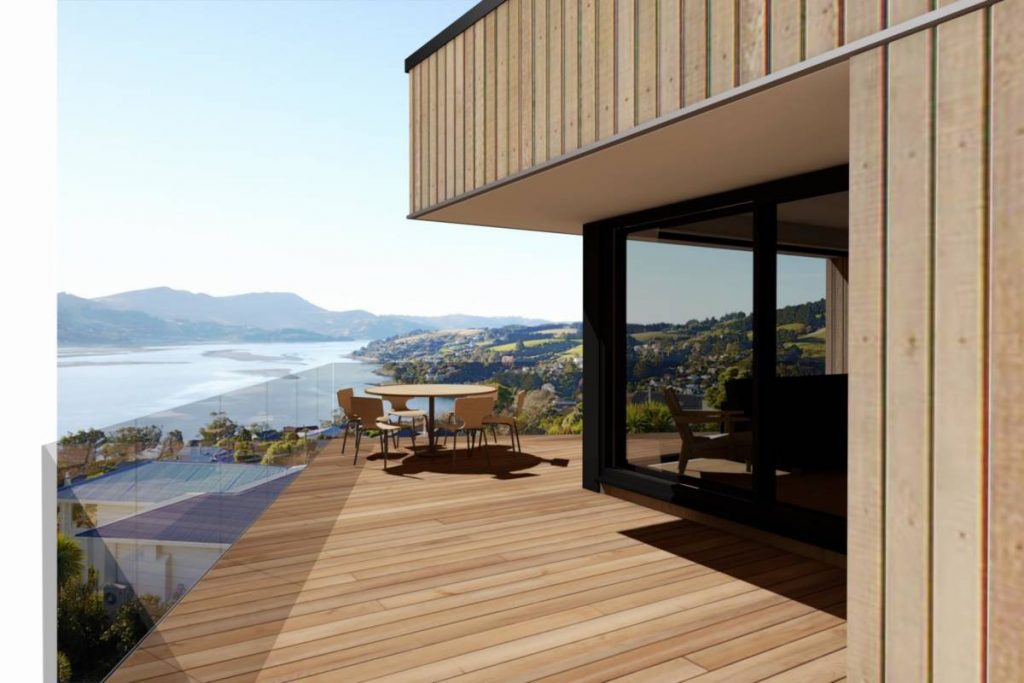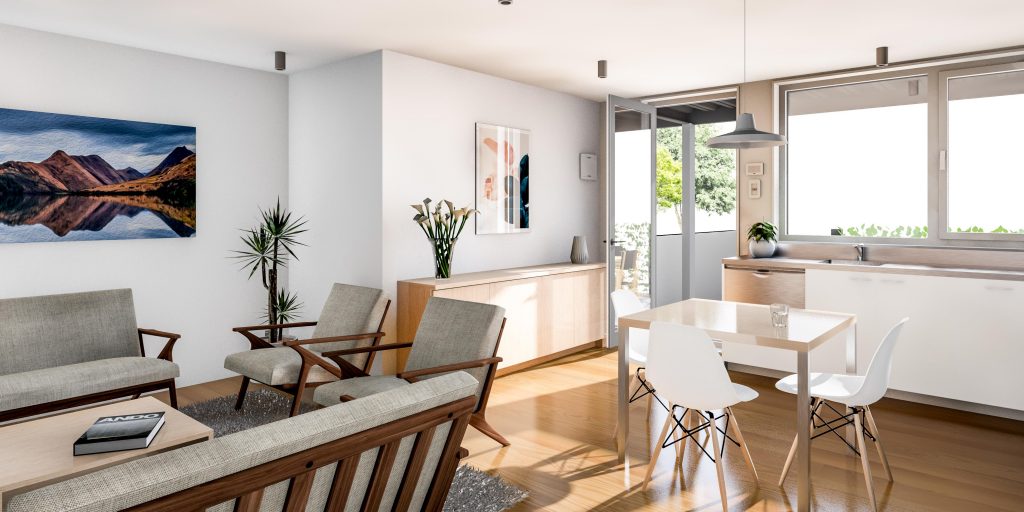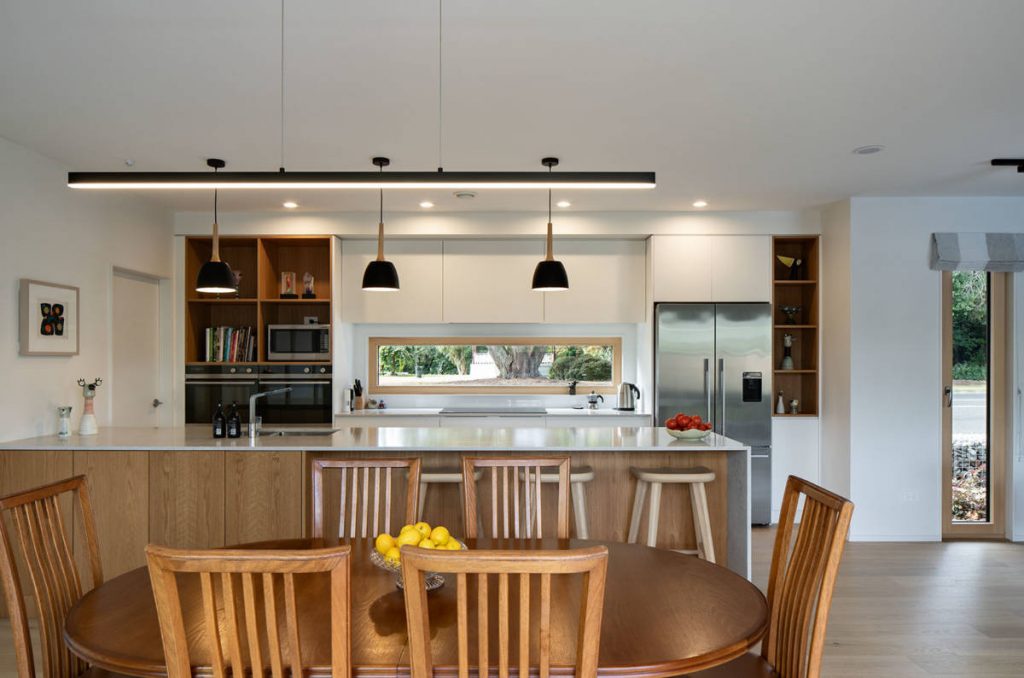Podcast: Play in new window | Download | Embed

The first New Zealand Passive House was completed in 2012. Since then, about 20 more individual private houses have been Certified using the internationally recognised standard. Now, New Zealand is about to get its first Certified Passive House Cohousing project and Tim Ross has been involved almost right from the start.
Becoming an Architect
Tim Ross has always thought of himself as a ‘maker’. He says it was always likely that he was going to end up as either a builder or an architect. He ultimately decided to combine his mother’s artistic talent with his father’s engineering background and Tim studied Architecture at Unitec in Auckland.
Performance Concepts
While at Feilden Clegg Bradley, Tim was introduced to concepts like ‘airtightness’ and ‘thermal bridges’. “I’d never heard of that before in my education in New Zealand”, explained Tim. This goes some way to describing the deficiency we still face in the training of our building and design professional here.
Tim became familiar with Green Star through Stephenson and Turner and later at Architectus. Working in the UK, he also gained some experience with the equivalent BREEAM rating. These are more general sustainability ratings, rather than specific and scientific energy standards.

An Introduction to Passive House
Tim was first introduced to Passive House while working in the UK. It was in the UK where he also first heard about concepts like cohousing. It wasn’t until a few years later when he had the chance to combine the two and be part of New Zealand’s first Passive House cohousing project.
Back home in New Zealand, Tim went along to a local architects’ meeting where he heard recently Certified Passive House Designer, Rafe Maclean talking about Passive House.
“That’s brilliant”, thought Tim in response to learning that Passive House training was available right here in New Zealand. He signed up for a course and became a Certified Passive House Designer himself.
Who is Doing Passive House?
It’s quite often the partner in a family or relationship who is at home the most, who has the biggest motivation for a good quality home, explained Tim. And the biggest demand for Passive House or just better performance, tends to come from immigrants to New Zealand, or Kiwis who have gone overseas and experienced a warm, comfortable house first hand.
Comfort is the Main Motivation for Passive House
[Tweet “The main reason they’re doing it (#PassiveHouse), would really be the comfort, Tim Ross @architypenz]
Passive House is great because it provides the numbers and the data to justify the investment. You can calculate a return or a payback period if you want to. But in Tim’s experience, comfort is the main reason people are motivated to design and build a Passive House in the first place.
“You can be low energy by just not turning the heating on,” said Tim, “…but it’s miserable”. Passive House allows you to be comfortable, healthy and energy efficient. It’s very cost effective in the long run.
Architype (New Zealand)
Architype (the New Zealand version) is now fifteen years old. Coincidently, a firm by the same name has also become a leading Passive House design firm in the UK. Architype UK was also a formative part of Elrond Burrell’s career. Their professionals can often be heard speaking at conferences about an exciting range of Passive House projects.
Attracting Passive House Clients
Tim Ross and his colleagues at Architype are now at point where they can (and do) turn away potential clients who are not interested in high performance buildings. “There are lots of other architects who can look after them”, explained Tim. Clients are attracted to Architype because they want a Passive House, or something well above the New Zealand Building Code. This hasn’t happened overnight, but it’s a nice place in the market for Architype to be now.
[Tweet, “We need to focus on looking after the people who want to do the high performance stuff, Tim Ross @architypenz”]
High Street Passive House Cohousing Project

It’s been a six year journey to get to this point, but the very exciting High Street Passive House Cohousing Project is now under construction. Check out the Archetype Facebook page for up dates and some cool drone photos!
Tim knew that a group coming together to create a cohousing project in New Zealand, made sense. He’d seen successful projects of this type earlier in his career while in the UK. After attending one of the first public meetings in Dunedin, Tim became involved in the project. He quickly convinced the stakeholders to embrace Passive House.

The High Street Cohousing project is now on track to become New Zealand’s first multi-unit Passive House building. This will be significant for the local market.
Passive House is relevant to all typologies of building, from high end apartments to affordable social housing, and from office blocks to factories. But to date, we only have standalone private residential dwellings certified as Passive House in New Zealand. It’s important for us to showcase local examples of other Passive House typologies to provide confidence and inspiration to the market.
Being Different is Hard – At First.
The biggest challenges faced by the stakeholders of the Passive House cohousing project have not been technical ones. The hardest, and most time consuming aspects have been dealing with banks and valuers.
Tim is hopeful (as am I) that the High Street Passive House cohousing project will provide much needed proof and assurance to financiers that this type of project is viable and a safe bet for New Zealand. Just like the very first Passive House project in New Zealand, we should be able leverage the success of High Street to make more projects like this, for the benefit of more New Zealanders.
More on the Way
Architype already has a couple of apartment buildings in design stage, one for community housing and another for student accommodation. These projects will add to the evidence that Passive House and high performance buildings are completely relevant for all budgets and all building types.
How to Get Success on Your Passive House Project
Tim recommends, starting with a Certified Passive House Designer and being prepared to be patient with the process if you want to do something a bit different and go high performance.
“Building anything in New Zealand is really expensive,” Tim explained. When the budget first comes back, “the finger gets pointed at the Passive House aspect of the design”. Tim went on the encourage people to accept that the price is always more that what you expect. Don’t immediately take out all the parts that will make your house perform well. Instead, look where savings can be made elsewhere perhaps in size, simplifying the design or starting with more affordable replaceable items such as kitchen and bathroom fittings. It’s easy to upgrade these later.
You only get one chance of a building an airtight envelope with high quality windows and minimised thermal bridging.
High Performance in Beautiful
Tim Ross and the team at Architype are proving that simple but high performing buildings don’t have to all look the same. Check out their growing portfolio of beautiful buildings.


Leave a Reply